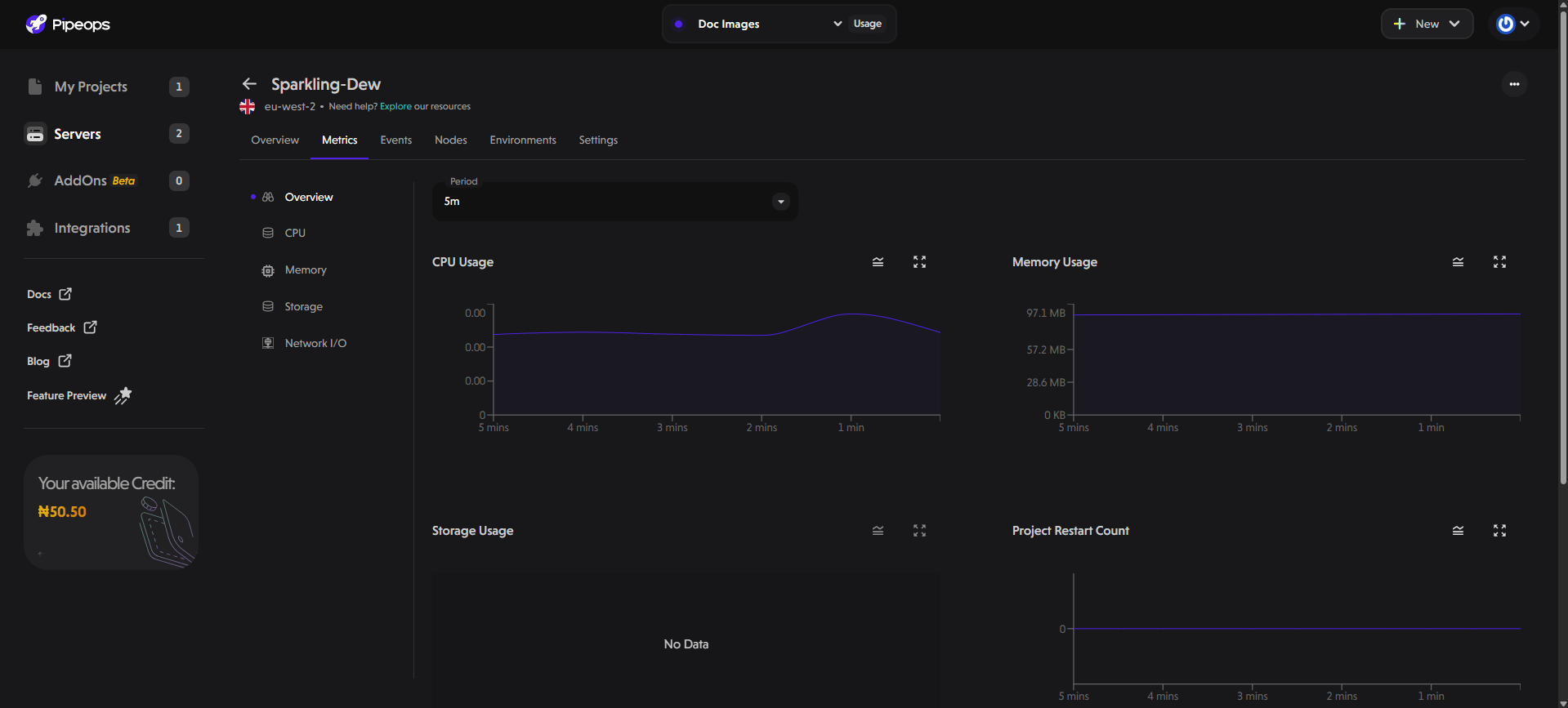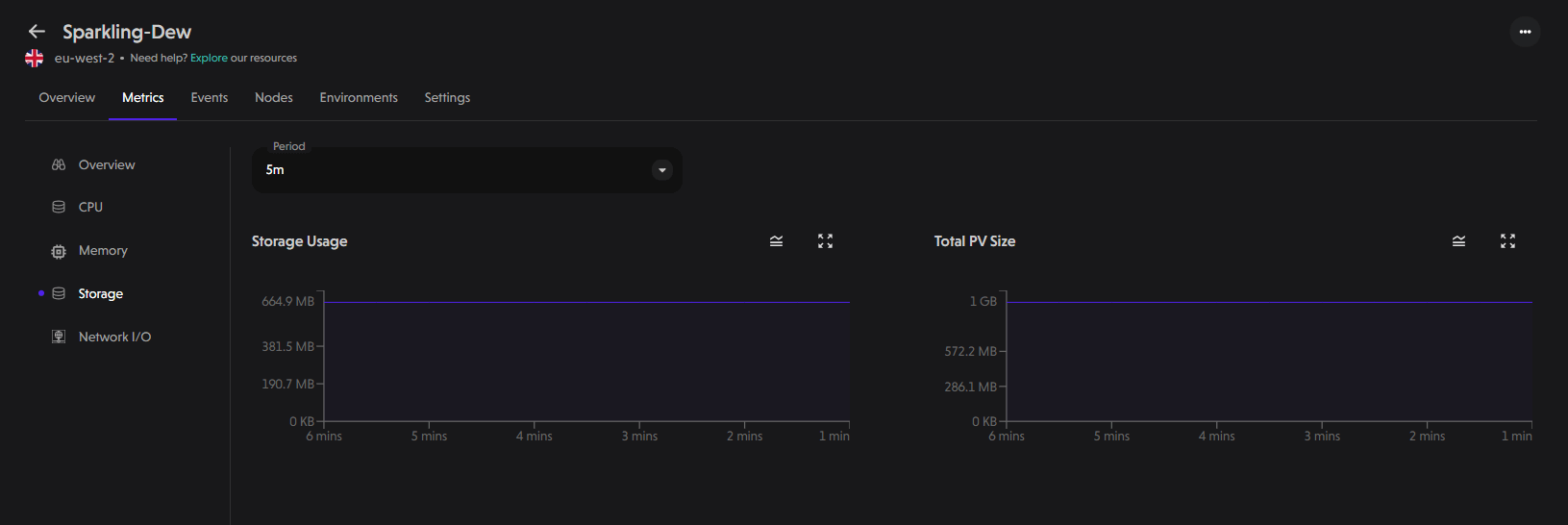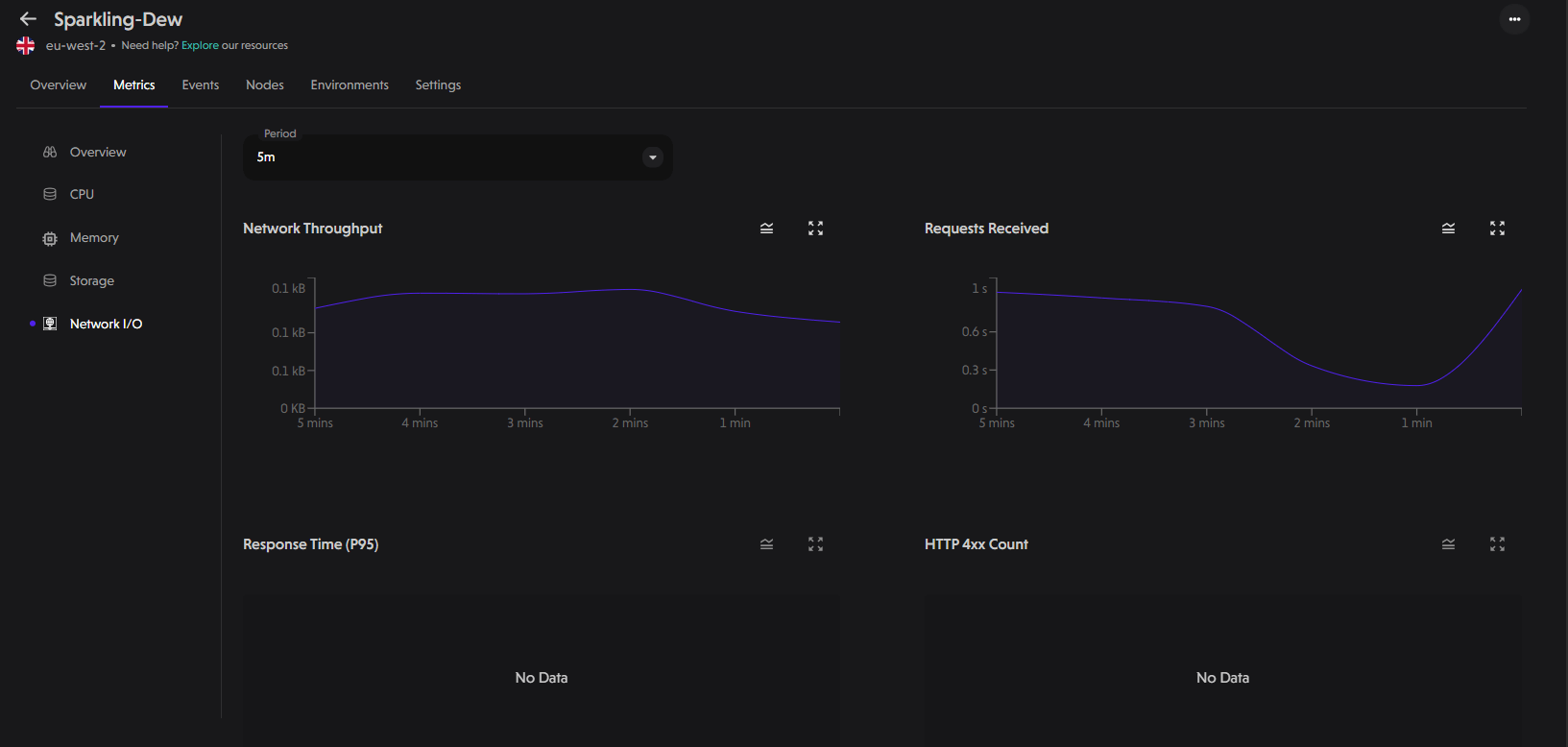Server Metrics
Overview
This documentation guides you through the process of accessing and exploring metrics for your deployed servers using PipeOps.
PipeOps allows users to gain valuable insights into the performance of deployed servers. By analyzing key metrics, you can identify potential issues, ensure efficient resource allocation, and maintain overall system health.
Accessing Server Metrics
To view the metrics for your server, follow these steps:
- Navigate to the Servers section.
- Select the desired server from the list.
- Click on the Metrics tab to open the metrics dashboard.

The image above illustrates the server metrics overview, offering a quick glimpse of how your server is performing across various metrics.
Exploring Individual Metrics
The Metrics dashboard includes various performance indicators that can help you monitor resource usage. Each one is represented by detailed graphs and data points. Let's explore some key metrics available:
CPU Metric
The CPU metric displays real-time CPU utilization. It helps you understand the processing power consumed by your server. Here's an example of how the CPU metric might be visualized:

Memory Metric
This metric provides insight into how much memory your server and applications are utilizing. Here's an example of how the memory metric might be represented:

Storage Metric
The storage metric helps you monitor disk space usage by your server. Here's an example of how the storage metric might be displayed:

Network I/O Metric
This metric shows inbound and outbound data traffic. It helps you understand data transfer between your server and the outside world.

Monitoring the control plane metric enables you to identify potential issues and optimize server management. Keep a close eye on this metric to ensure smooth operation and maximize performance.
By continuously monitoring these metrics, you can optimize your server’s performance, prevent resource exhaustion, and troubleshoot proactively.